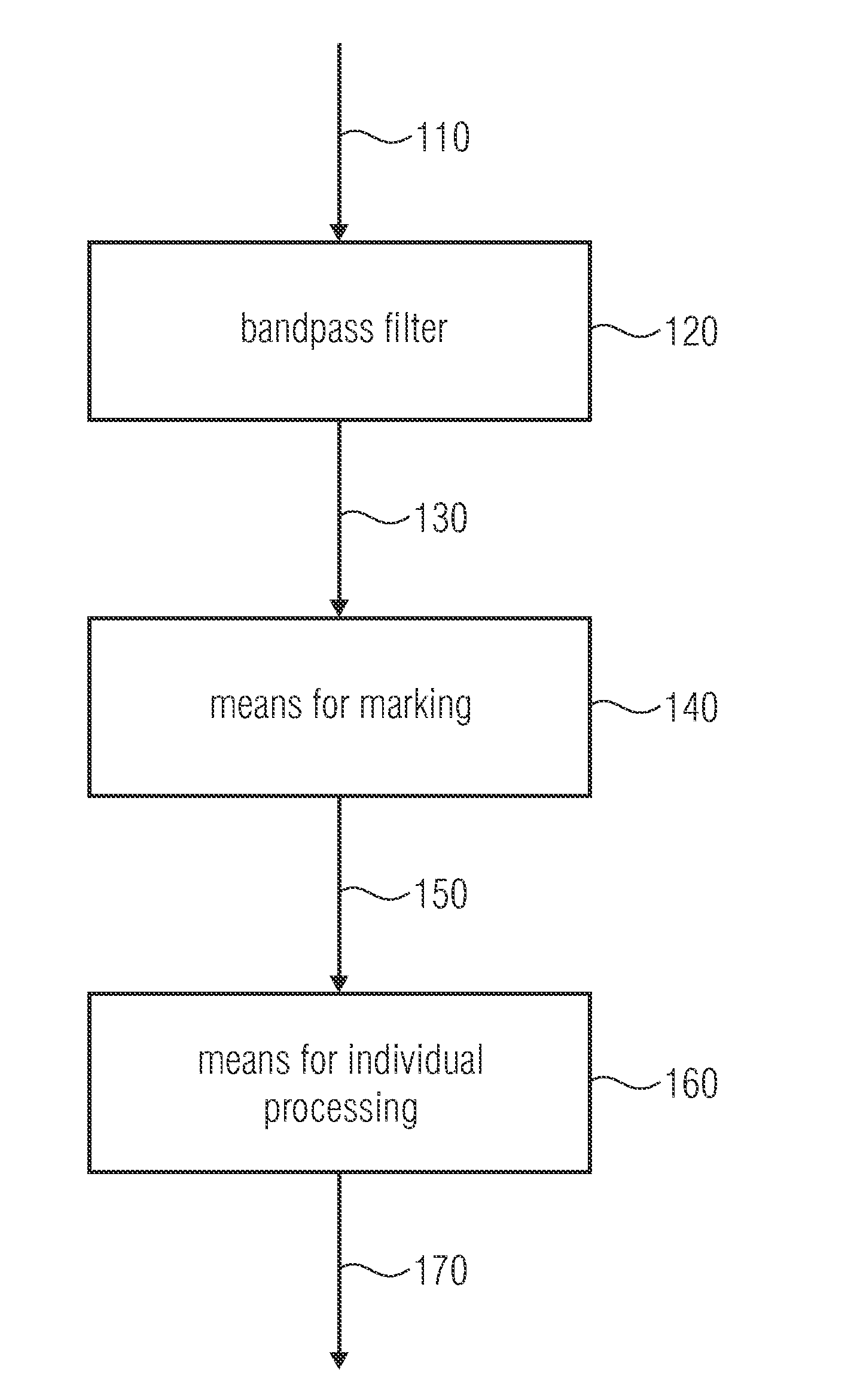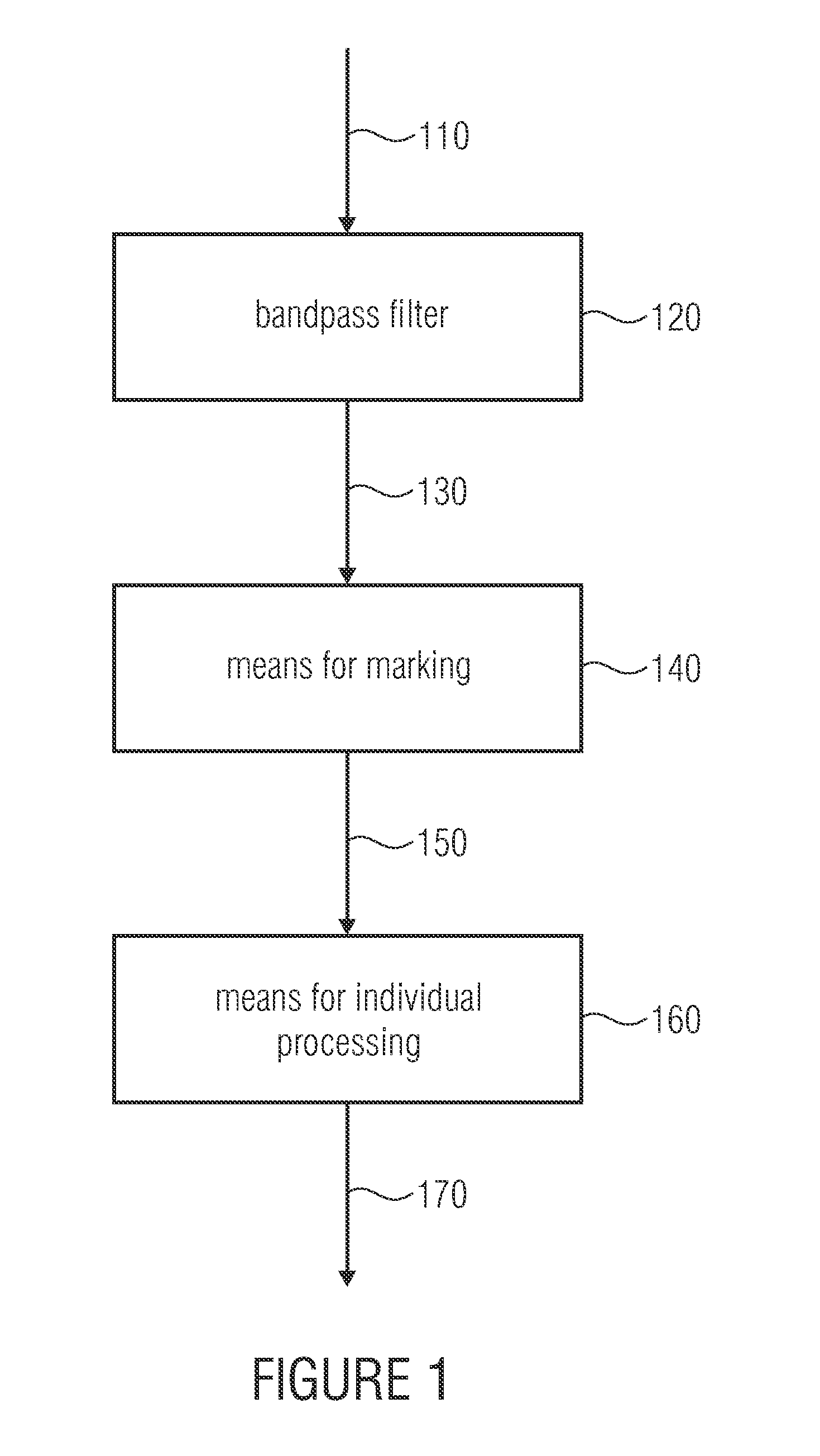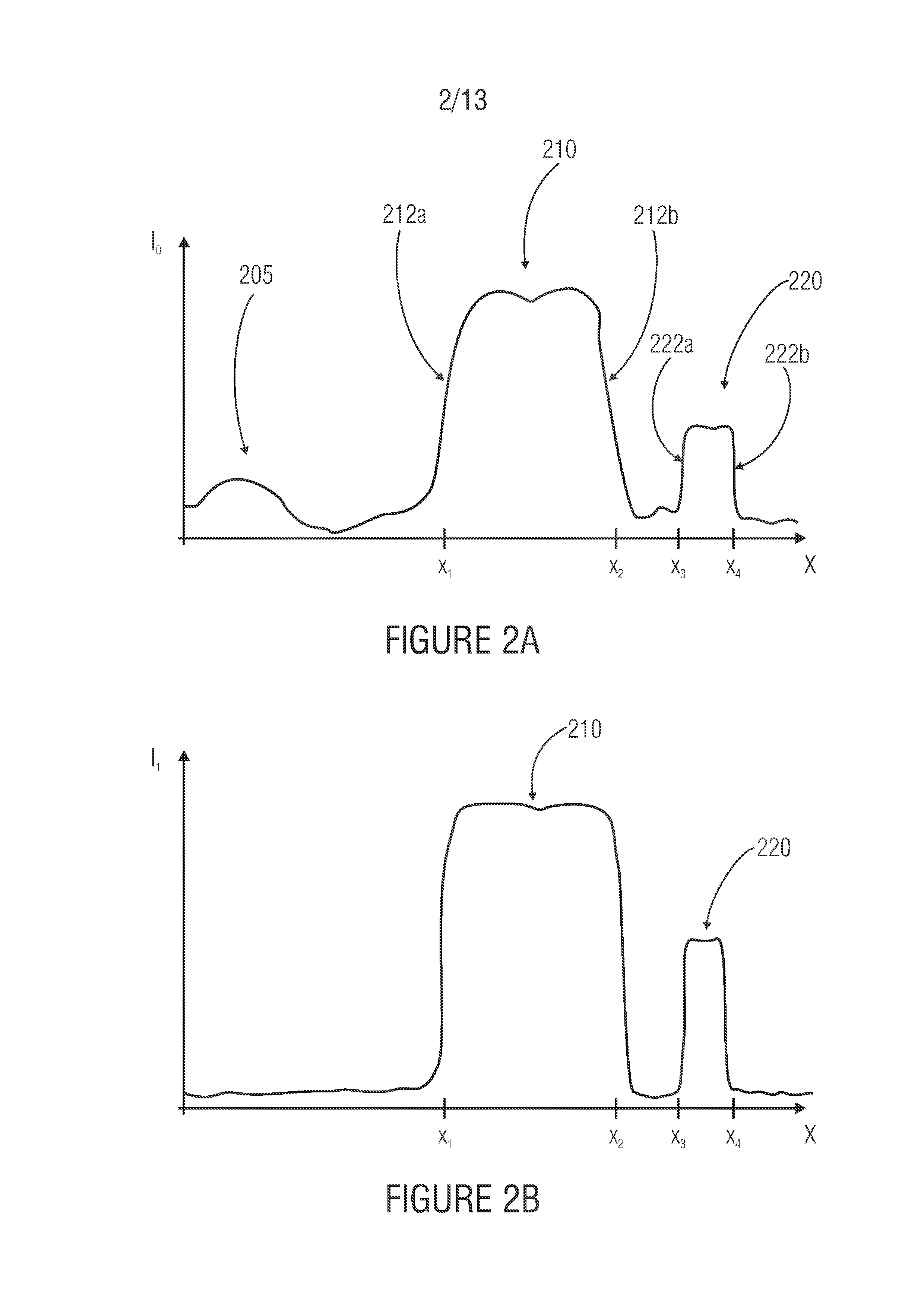Segmentation of microcalcifications in a mammographic image
a mammographic image and segmentation technology, applied in image data processing, character and pattern recognition, instruments, etc., can solve the problems of difficult differentiation between benign and malignant lesions, insufficient segmentation results of conventional fully automatic methods for separating individual calcium particles from the background, and frequent use of mammographic images, etc., to achieve significant improvement of segmentation results, increase of extraction form and distribution features, and gradual improvement of segmentation of individual calcium particles
- Summary
- Abstract
- Description
- Claims
- Application Information
AI Technical Summary
Benefits of technology
Problems solved by technology
Method used
Image
Examples
Embodiment Construction
[0032]Regarding the subsequent description, it should be noted that in the different embodiments equal or similar functional elements or structures have the same or similar reference numerals, and hence the descriptions of these functional elements and the different embodiments are interchangeable.
[0033]FIG. 1 shows a schematic illustration of an apparatus for segmenting microcalcifications 105 in a mammographic image 110, having a bandpass filter 120, wherein the bandpass filter 120 performs bandpass filtering of the mammographic image 110 for obtaining a filtered mammographic image 130. The filtered mammographic image 130 is supplied to a means for marking 140, which generates a marked mammographic image 150 from the same. Finally, the marked mammographic image 150 is input into a means for individual processing 160, wherein the means for individual processing 160 generates segmentation 170 from the marked mammographic image 150.
[0034]The means for marking 140 marks an amount of i...
PUM
 Login to View More
Login to View More Abstract
Description
Claims
Application Information
 Login to View More
Login to View More - R&D
- Intellectual Property
- Life Sciences
- Materials
- Tech Scout
- Unparalleled Data Quality
- Higher Quality Content
- 60% Fewer Hallucinations
Browse by: Latest US Patents, China's latest patents, Technical Efficacy Thesaurus, Application Domain, Technology Topic, Popular Technical Reports.
© 2025 PatSnap. All rights reserved.Legal|Privacy policy|Modern Slavery Act Transparency Statement|Sitemap|About US| Contact US: help@patsnap.com



